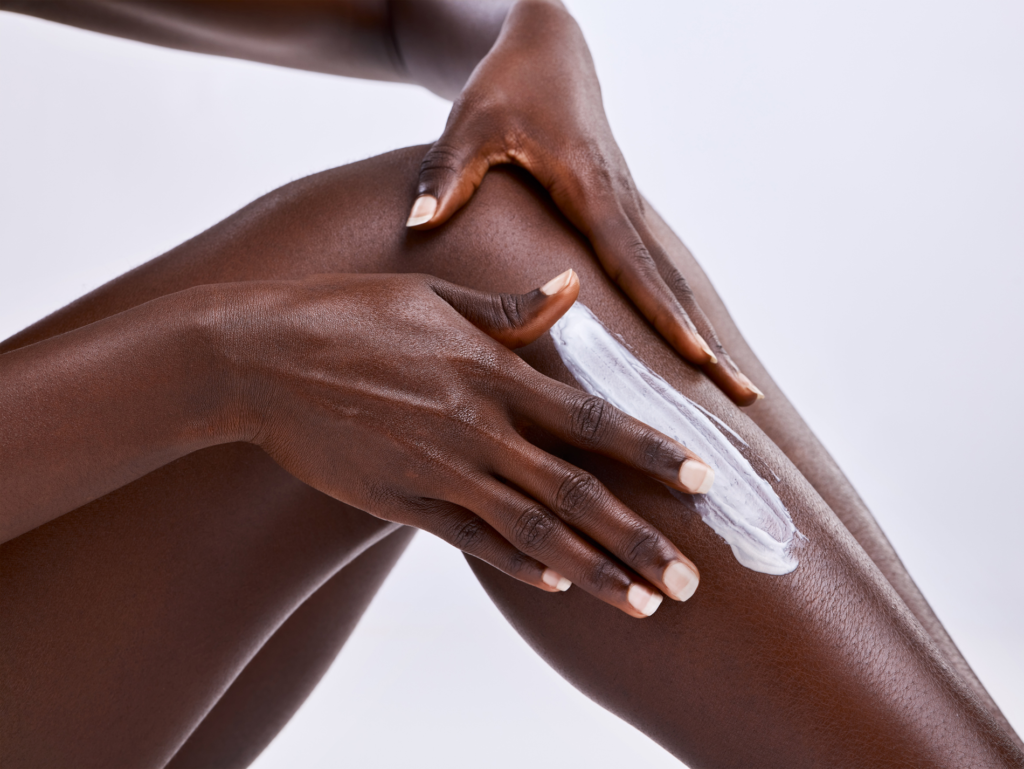Summer is here and hotter than ever. Wearing sunscreen used to be reserved for those of a lighter hue, but these days, more African Americans are choosing to protect their skin against the sun’s UV rays by using sunscreen. But is it safe?
Let’s discuss ultraviolent (UV) rays and how they harm the skin and. Then we’ll take a look at the ingredients in some common brands on the market.
What are UV Rays?
Ultraviolet (UV) rays are a type of electromagnetic radiation emitted by the sun and artificial sources like tanning beds. While they play a crucial role in the production of vitamin D, excessive exposure to these rays poses significant risks to skin health.
Different Types of UV Rays
Ultraviolet radiation is categorized into three types based on their wavelength:
UVA (Ultraviolet A): These rays have the longest wavelength and can penetrate deep into the skin layers. They are associated with skin aging and contribute to tanning. UVA rays are present during all daylight hours and can penetrate clouds and glass.
UVB (Ultraviolet B): With a shorter wavelength than UVA, UVB rays affect the superficial layers of the skin. They are the primary cause of sunburn and play a significant role in the development of skin cancer. UVB intensity varies with the time of day, season, and location.
UVC (Ultraviolet C): These have the shortest wavelengths and are the most dangerous. Fortunately, UVC rays are absorbed by the Earth’s ozone layer and do not reach the surface.
How UV Rays Harm the Skin
Skin Cancer: Prolonged and unprotected exposure to UV rays is the primary cause of skin cancer, including melanoma, the deadliest form. UV radiation damages the DNA in skin cells, leading to mutations that can result in uncontrolled cell growth.
Premature Aging: UVA rays penetrate deep into the skin, breaking down collagen and elastin, the proteins that keep skin firm and elastic. This damage results in wrinkles, leathery skin, and a loss of skin tone.
Sunburn: UVB rays are primarily responsible for sunburn, an inflammatory reaction to excessive UV exposure. Sunburn increases the risk of skin cancer and accelerates skin aging.
Eye Damage: Though not directly related to skin, UV rays can also harm the eyes, leading to conditions such as cataracts and photokeratitis.
Suppression of the Immune System: UV radiation can alter the activity and distribution of cells responsible for triggering immune responses, potentially leading to reduced immune function.
Dangerous Ingredients in Common Sunscreens
Avobenzone: has potential endocrine-disrupting effects, which may indirectly contribute to cancer risk
Octinoxate: has hormone effects on the metabolic system and affects thyroid hormone production.
Homosalate: may disrupt estrogen, androgen and progesterone production and cause skin rashes, acne and skin irritation
Studies reported that these ingredients could be detected on the skin and in the blood weeks after application.
Watch video below of safe sunscreens to buy.
Other Ways to Protect the Skin Against UV Rays
Protective Clothing: Wear long-sleeved shirts, pants, and wide-brimmed hats to cover the skin. UV-blocking sunglasses are also essential for eye protection.
Shade: Seek shade during the sun’s peak hours, typically between 10 a.m. and 4 p.m.
Regular Skin Checks: Perform regular skin self-examinations and visit a dermatologist for professional skin checks to catch any early signs of skin damage or cancer.
